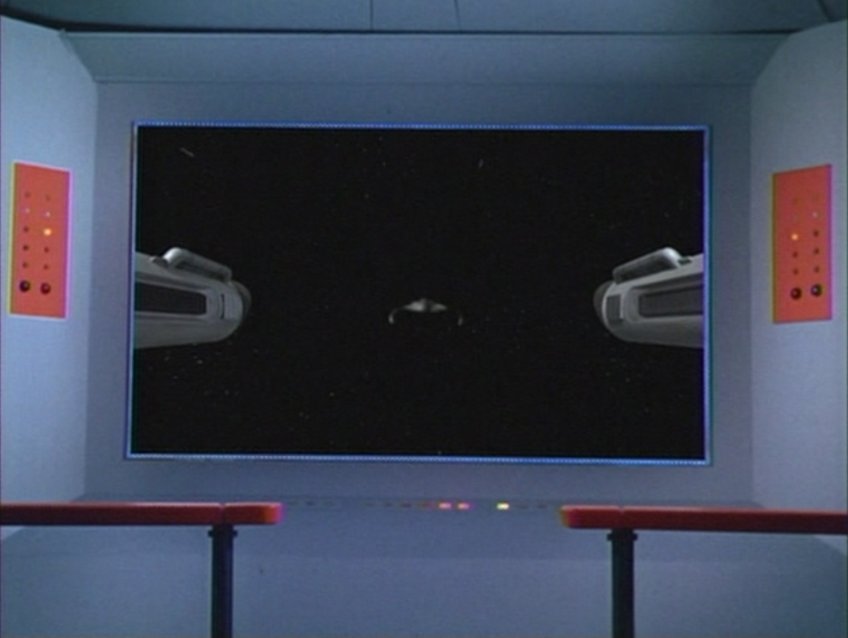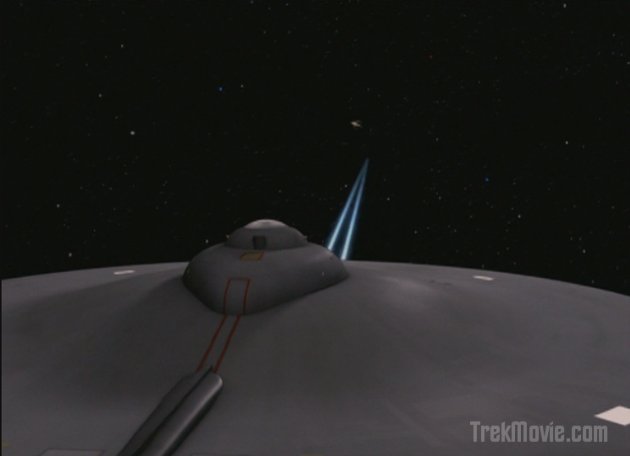Just wanted to point over to the CanonWars blog (see here and especially here), where there are recent Lucas quotes. Lucas re-iterates and expands upon the assorted "parallel universe"/"two universes" sorts of quotes that he's been making since 2001, which (as we know) nullify the efforts of some to use Star Wars novels and reference guides (including children's books created by Vs. Debaters which were an attempt to 'adjust' the 'evidence').
While I'm saddened by the knowledge that some will continue to embarrass themselves by suggesting otherwise despite seven years of quotes on the matter, the simple fact is that by the standards that the Vs. Debate supposedly uses, the Expanded Universe is objectively invalid, and its continued use is a subjective choice to deviate from the standard.
Consider this a sort of epilogue to the State of the Debate 2008 post.
2008-04-17
2008-04-08
TOR and Distance
I've been noticing something for awhile that I've been hesitant to deal with, but it has to happen.
I've been hesitant for a few reasons. First, I was a little unclear on how one should treat the remastered original series (usu. "TOS-R", but I prefer "TOR" because it fits the three-letter scheme). Second, and more importantly, I haven't really seen any of it. For the most part I'm just seeing the TrekMovie.com reports so far.
But there are now too many cases confirmable even from TrekMovie reports for me to continue hesitating.
At issue is this: the TOR guys have no conception of distance whatsoever.
The example that broke the camel's proverbial back is this one from TrekMovie:

That is the lead Romulan ship from "The Enterprise Incident" giving chase to the Enterprise near the end of the episode, as Scotty feverishly works to install the stolen cloaking device, and Spock ponders his recent installation regarding the also-stolen Romulan commander.
You'll note that the Enterprise nacelles are clearly visible in this aft view, as if to scream "this is an aft view!" . . . because otherwise we silly modern viewers might not get it.
Here's the problem, though, with thanks to Chakoteya's transcripts site:
In the FX reel available at TrekMovie.com, you can even hear "very rapidly" while the image above showing the nacelle ends is on the screen. In other words, the displayed image . . . showing a Klingon ship perhaps a handful of kilometers distant assuming a normal camera image . . . is in fact some 150,000 kilometers away.
One could try to explain the discrepancy via other, intra-universe means. For instance, one could assume a really wonky camera system in use for the viewscreen, or an image display system with a flair for the dramatic. But such in-universe explanations fall flat with other examples.
For instance, we have "Journey to Babel", in which the Enterprise has difficulty firing on a high-warp attacker. In the episode, we see this:

There's a dot which, in the video, looks like a fly buzzing about in space, with the Enteprise phasers trying and failing to track it.
Clearly the CBS Digital guys thought it would be cool to see the Orion ship zipping about. However, they failed to realize this is impossible, even ignoring the inherent peculiarity of seeing a superluminal vessel at all. (I can't fault them for that, though, since TNG, especially early TNG, often showed us the Enterprise flying by at high warp with a normal starfield behind it. It's a convention.)
To be able to see the Orion ship zipping about like that, it must either be helluva-huge or awfully close. By "huge" we're talking about thousands of kilometers. By "close" we're talking about hundreds or perhaps thousands of kilometers for it to show up as just a dot, but in that case it would be moving very slowly.
Even at a bit above lightspeed . . . say, 314,159 km/s . . . a vessel 1,000 kilometers from the Enterprise would be able to orbit the ship 100 times per second. (At best, then, the little dot in the episode would only be akin to how helicopter rotor blades or bicycle spokes can appear to stand still if the frame rate and motion match.)
Episodes like "Elaan of Troyius", which also features both warp strafing and range callouts in the tens of thousands of kilometers, also get this absurd sort of treatment. There are other examples as well, but frankly I'm sufficiently depressed. ;)
It seems pretty clear that, in the end, TOR will be considered canon . . . it will, apparently, be all that is available in the high-def world. Such obvious errors are unfortunate given how easily they could've been avoided with a little research. The fact that Dave Rossi and Mike Okuda are involved in this makes this failure to research and comprehend even more appalling.
While it is tempting to declare all of the remastered effects as mere eye candy illustrations (and indeed, in many cases "illustration" is precisely what it looks like), the simple fact is that we cannot completely ignore them. However, in the case of obvious error like this, we have no choice but to ignore the revisions where they err.
I've been hesitant for a few reasons. First, I was a little unclear on how one should treat the remastered original series (usu. "TOS-R", but I prefer "TOR" because it fits the three-letter scheme). Second, and more importantly, I haven't really seen any of it. For the most part I'm just seeing the TrekMovie.com reports so far.
But there are now too many cases confirmable even from TrekMovie reports for me to continue hesitating.
At issue is this: the TOR guys have no conception of distance whatsoever.
The example that broke the camel's proverbial back is this one from TrekMovie:

That is the lead Romulan ship from "The Enterprise Incident" giving chase to the Enterprise near the end of the episode, as Scotty feverishly works to install the stolen cloaking device, and Spock ponders his recent installation regarding the also-stolen Romulan commander.
You'll note that the Enterprise nacelles are clearly visible in this aft view, as if to scream "this is an aft view!" . . . because otherwise we silly modern viewers might not get it.
Here's the problem, though, with thanks to Chakoteya's transcripts site:
KIRK: Mister Spock, distance from the Romulan vessel?
SPOCK: One hundred and fifty thousand kilometres, Captain, and closing very rapidly.
KIRK: Stand by, phasers. Commander, you'll forgive me if I put up a fight.
COMMANDER: Of course. It's expected.
SPOCK: One hundred thousand kilometres. They should commence firing at us within the next twelve point seven seconds.
In the FX reel available at TrekMovie.com, you can even hear "very rapidly" while the image above showing the nacelle ends is on the screen. In other words, the displayed image . . . showing a Klingon ship perhaps a handful of kilometers distant assuming a normal camera image . . . is in fact some 150,000 kilometers away.
One could try to explain the discrepancy via other, intra-universe means. For instance, one could assume a really wonky camera system in use for the viewscreen, or an image display system with a flair for the dramatic. But such in-universe explanations fall flat with other examples.
For instance, we have "Journey to Babel", in which the Enterprise has difficulty firing on a high-warp attacker. In the episode, we see this:

There's a dot which, in the video, looks like a fly buzzing about in space, with the Enteprise phasers trying and failing to track it.
Clearly the CBS Digital guys thought it would be cool to see the Orion ship zipping about. However, they failed to realize this is impossible, even ignoring the inherent peculiarity of seeing a superluminal vessel at all. (I can't fault them for that, though, since TNG, especially early TNG, often showed us the Enterprise flying by at high warp with a normal starfield behind it. It's a convention.)
To be able to see the Orion ship zipping about like that, it must either be helluva-huge or awfully close. By "huge" we're talking about thousands of kilometers. By "close" we're talking about hundreds or perhaps thousands of kilometers for it to show up as just a dot, but in that case it would be moving very slowly.
Even at a bit above lightspeed . . . say, 314,159 km/s . . . a vessel 1,000 kilometers from the Enterprise would be able to orbit the ship 100 times per second. (At best, then, the little dot in the episode would only be akin to how helicopter rotor blades or bicycle spokes can appear to stand still if the frame rate and motion match.)
Episodes like "Elaan of Troyius", which also features both warp strafing and range callouts in the tens of thousands of kilometers, also get this absurd sort of treatment. There are other examples as well, but frankly I'm sufficiently depressed. ;)
It seems pretty clear that, in the end, TOR will be considered canon . . . it will, apparently, be all that is available in the high-def world. Such obvious errors are unfortunate given how easily they could've been avoided with a little research. The fact that Dave Rossi and Mike Okuda are involved in this makes this failure to research and comprehend even more appalling.
While it is tempting to declare all of the remastered effects as mere eye candy illustrations (and indeed, in many cases "illustration" is precisely what it looks like), the simple fact is that we cannot completely ignore them. However, in the case of obvious error like this, we have no choice but to ignore the revisions where they err.
Subscribe to:
Posts (Atom)